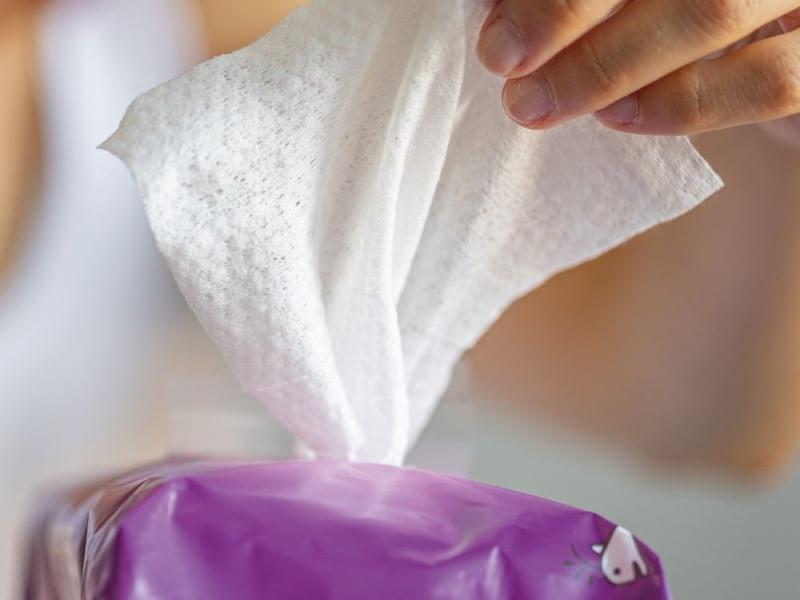Wetlaid nonwovens are currently experiencing moderate growth, faster than all but spunlaid and spunlace nonwovens, according to a new report published by Smithers,
The Future of Wetlaid Nonwovens to 2027. Global consumption of nonwovens in 2022 is 687,300 tonnes or 19.1m2, valued at $2.1 billion. Growth rates for 2017–22 were 6.3% (tonnes), 6.5% (m2) and 6.2% ($). Growth rates reflect the effects, (negative and positive) of Covid-19 on wetlaid nonwoven end-use markets. Wetlaid nonwoven markets were only marginally affected by Covid-19.
Digital printing has given this type of nonwovens some new life, as has growth in popularity of single-serve beverages. A new application for wetlaid nonwovens is in electronics, notably battery separators, which are important for electric vehicles and personal electronics.
Wetlaid nonwovens are one of the smallest of the major nonwoven process types, accounting for only 5.1% of global nonwovens in 2022. The global move toward more sustainable products has driven the new hydroentangled wetlaid product markets to rapid growth; so rapid that there currently is global over-supply, and the market may have already reached maturity. This new market research from Smithers examines five wetlaid nonwoven variants, including standard synthetic fibre/pulp wetlaid, double recrepe (DRC), all-synthetic fibre wetlaid, glass fibre-based wetlaid, and hydroentangled wetlaid (HEW).
Wetlaid nonwovens by market share
The largest variant of nonwovens by far is standard synthetic fibre/pulp wetlaid, which accounts for about 52.0% of all wetlaid in 2022 in tonnes. This variant will slowly lose market share, dropping to 49.6% of all wetlaid tonnes in 2027. Second is glass based wetlaid or wetlaid fiberglass, which accounts for about 15.9% of wetlaid nonwovens value in 2022. This share is growing and will account for 17.9% of the wetlaid market in 2027. Next is hydroentangled wetlaid, a product recently re-defined as wetlaid and used primarily in flushable wipes. Hydroentangled wetlaid accounts for 15.6% of global wetlaid value in 2022; due to a capacity surplus and fast growing flushable wipe end-uses, its market share will increase to 17.8% through 2027.
Materials used in nonwovens
The flexibility of the wetlaid process permits the use of a wide variety of fibrous materials, and especially natural fibres. Since the wetlaid process is an evolution of the wetlaid paper process, wood pulp is one obvious choice and does represent about 46.9% of all raw materials used in producing wetlaid nonwovens in 2020. Aside from the expected polyester, polypropylene, viscose, lyocell and glass fibres, there is a large “other fibre” category for raw materials accounting for 8.0% of all wetlaid raw materials in 2022. These “other fibres” include a large abaca fibre segment.
Most wet laid nonwovens contain about 30% of relatively long synthetic or manmade fibres, and normally polyester staple fibre fills this requirement. Smaller amounts of polypropylene and bicomponent staple fibre add thermal bonding possibilities. Glass fibre is also a longer synthetic fibre.
Overall, wetlaid nonwovens tend to rely more heavily on natural, short length, hydrophilic and sustainable fibres than the overall nonwovens industry does. Additionally, its largest raw material (wood pulp) is lower cost and more supply stable than almost any other raw material used for nonwovens. This low cost, stable raw material base makes wetlaid nonwovens much more resistant to unexpected volatility due to petroleum prices or regional instability.
In 2022, wood pulp will account for 46.9% of all wetlaid nonwoven raw materials, with glass fibre second at 12.7% and polyester fibre third at 12.4%. Others include binders/additives (8.6%), “other fibres” (8.0%), rayon/lyocell (7.5%), polypropylene fibre (3.4%), and bicomponent fibre (0.5%).
Disposable and durable nonwovens
Wetlaid nonwovens can be further sub-divided into the disposable and durable categories. Disposable markets include hygiene, medical, wipes and some miscellaneous uses like packaging. These account for 43.1% of wetlaid nonwovens by weight and 44.8% of sales in 2022, or 296,300 tonnes and $946.9 million respectively. This percentage is heavily dependent on the inclusion of hydroentangled wetlaid wipes. In 2017, wetlaid nonwovens used in disposable applications were 201,200 tonnes with $657.5 million in sales. This was equivalent to market shares of 39.8% by volume and 42.1% by value.
CAGRs for 2017-22 are 8.0% by volume, and 7.6% by value. Forecasts for wetlaid nonwovens use in disposable applications in 2027 are 392,100 tonnes, worth $1.3 billion. Forecast CAGRs for 2022-27 are a more normal 5.8% by tonnes, and 7.2% by dollar value.
Durable end uses include shoe components, coating substrate, liquid, air and gas filtration, wall coverings, roof and building underlay as well as some miscellaneous applications like battery separators. Automotive applications are covered here mostly under filtration and floor covering (mainly carpet backing) is covered under building underlays. Wetlaid nonwovens are weighted toward durable end uses. Specifically, durable end uses consumed 60.2% of the tonnes and 57.9% of the sales value. In 2017, wetlaid nonwovens used in durable applications were 304,600 tonnes with a value of $905.5 million in sales.
